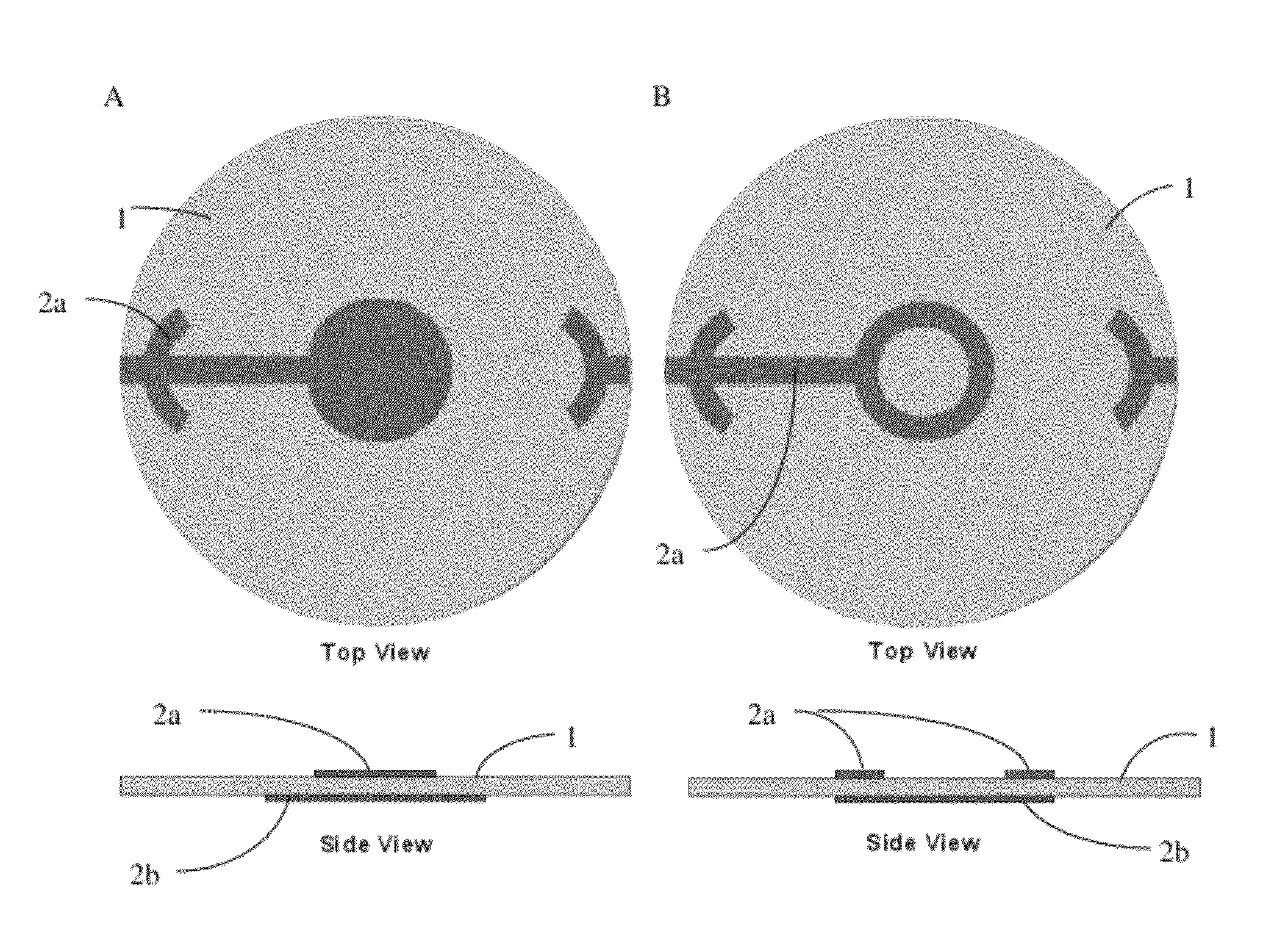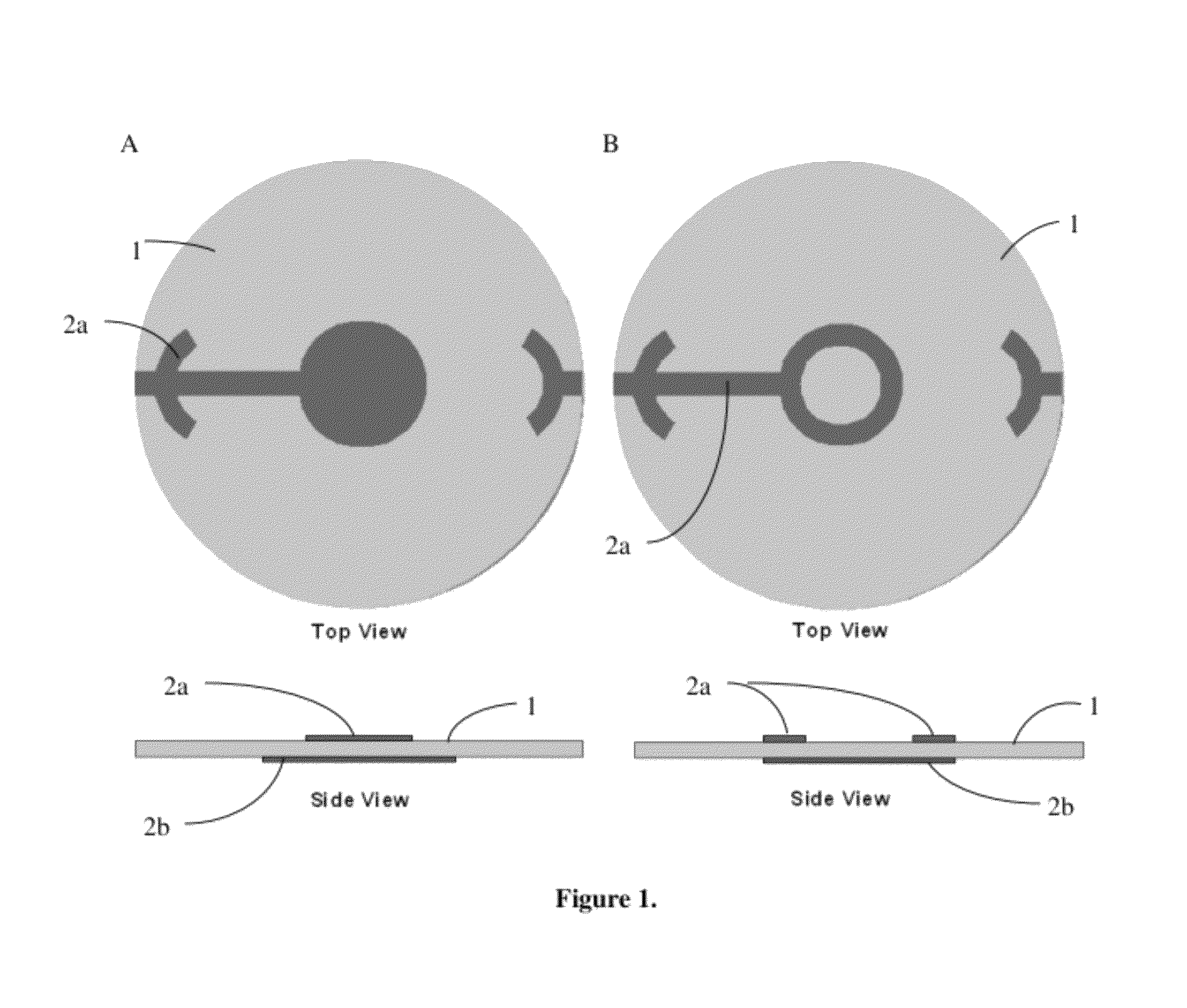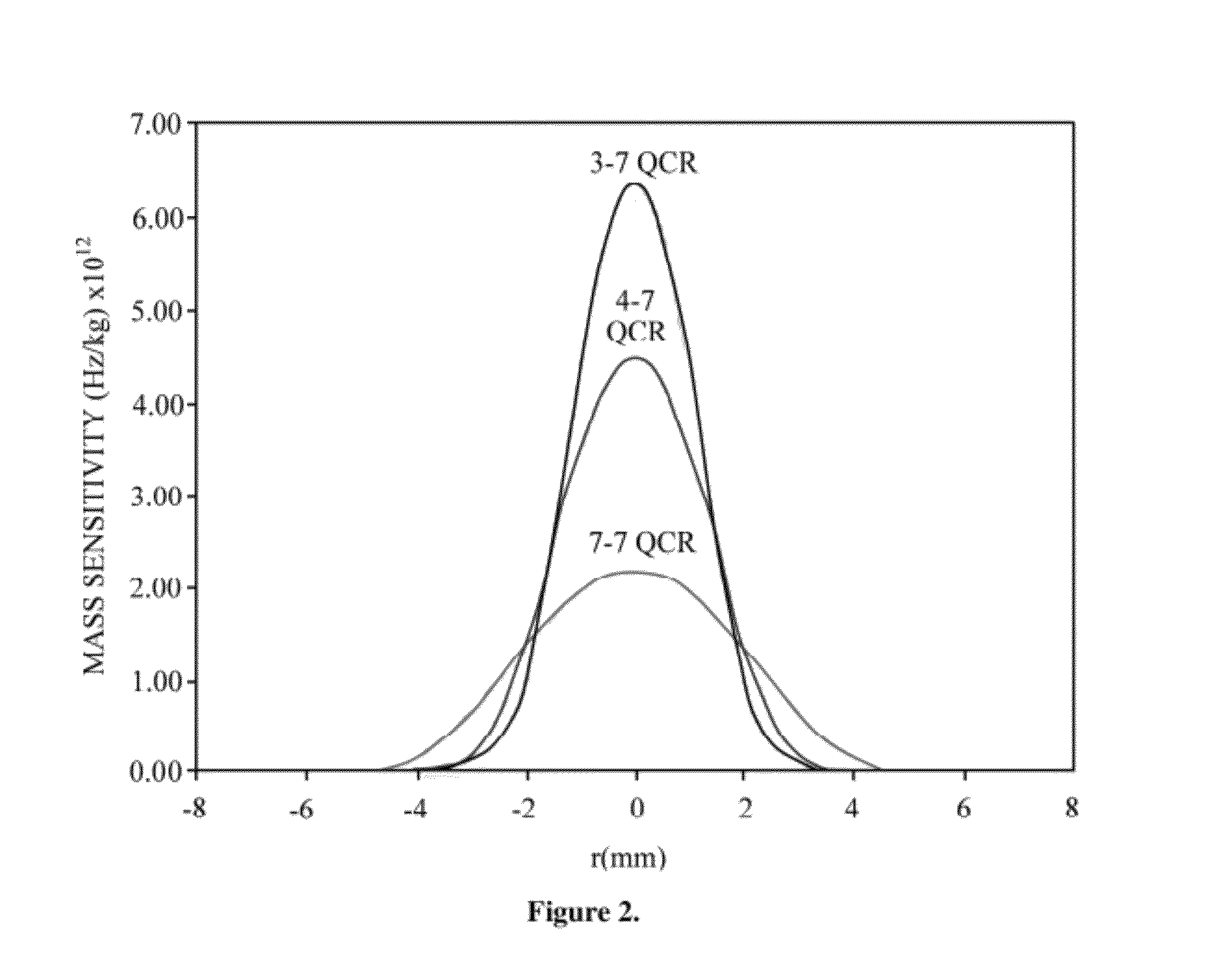Uniform mass sensitivity thickness shear mode quartz resonator
a quartz resonator and thickness technology, applied in the field of thickness shear mode resonators, can solve the problems of time-consuming and expensive processes, and achieve the effects of uniform mass sensitivity, accurate and inexpensive characterization of mass loadings, and uniform mass sensitivity
- Summary
- Abstract
- Description
- Claims
- Application Information
AI Technical Summary
Benefits of technology
Problems solved by technology
Method used
Image
Examples
example 1
TSM Device Design
[0032]The device eliminates the non-uniformity in mass sensitivity of commercially available devices through modification of the electrode design. The models relate frequency shift to mass accumulated on surface of TSM device through Sauerbrey's equation:
[0033]mf=Δfρqvq2fr2(1)
[0034]A model was employed herein, based upon a resonance analysis across the sensor platform, which is capable of producing displacement amplitude distributions for both the simple “n-m” and ring electrode cases (F. Josse, et al., “Analysis of the radial dependence of mass sensitivity for modified-electrode quartz resonators.”Analytical Chemistry, vol. 70, pp. 237-247, 1998). The radial mass sensitivity profile of a TSM device is influenced by the electrode configuration. Utilizing the analytical model of Josse, et al. (F. Josse, et al., “Analysis of the radial dependence of mass sensitivity for modified-electrode quartz resonators.”Analytical Chemistry, vol. 70, pp. 237-247, 1998) for b...
example 2
TSM Device Fabrication and Electrical Characterization
[0048]To produce the TSM devices, a photolithographic process and metal deposition were conducted. The blank quartz substrates utilized were polished 1-inch diameter AT-cut crystals with an operating frequency of 5 MHz (Tangidyne Corp.). These quartz blanks were cut by the manufacturer at an angle of 35° with a one-minute precision and polished with 0.01 μm grit. A 2.0 ml droplet of photoresist (Futurrex, Inc., NR9-1500PY) was deposited at the center of the blank and spun-off at 3500 rpm for 30 seconds in a spin-coater (Laurell Tech.). The resulting thickness of the resist layer was not characterized. Once the photoresist was soft-baked in an oven at 90° C. for 15 minutes, it was exposed to viable electrode designs on a high-resolution chromium / glass photomask (Advanced Reproductions Corp.), as seen in FIG. 6, using a long-wave (365 nm) UV lamp for 45 seconds (Blak-Ray, model B-100W). After exposure, the resist-coated crystal was...
example 3
Mass Sensitivity Distributions
[0053]Various techniques to measure the mass sensitivity across the surface plane of a TSM resonator have been developed including x-ray diffraction to characterize quartz particle vibration, surface charge distribution measurement, and characterization of optical speckle patterning produced by coherent light incident across the quartz surface. However, all of these methods have significant limitations, discussed in (P. J. Cumpson and M. P. Seah, “The quartz crystal microbalance; radial / polar dependence of mass sensitivity both on and off the electrodes.”Meas. Sci. Tech., vol. 1, pp. 544-555, 1990; P. J. Cumpson, “Quartz crystal microbalance: A new design eliminates sensitivity outside the electrodes, often wrongly attributed to the electric fringing field.”J. Vac. Sci. Tech. A, vol. 15, pp. 2407-2412, 1997; V. M. Mecea, “A new method of measuring the mass sensitive areas of quartz crystal resonators.”J. Phys. E: Sci. Instr., vol 22, pp. 59-61, 1989).
[0...
PUM
| Property | Measurement | Unit |
|---|---|---|
| diameter | aaaaa | aaaaa |
| diameter | aaaaa | aaaaa |
| outer diameter | aaaaa | aaaaa |
Abstract
Description
Claims
Application Information
 Login to View More
Login to View More - R&D
- Intellectual Property
- Life Sciences
- Materials
- Tech Scout
- Unparalleled Data Quality
- Higher Quality Content
- 60% Fewer Hallucinations
Browse by: Latest US Patents, China's latest patents, Technical Efficacy Thesaurus, Application Domain, Technology Topic, Popular Technical Reports.
© 2025 PatSnap. All rights reserved.Legal|Privacy policy|Modern Slavery Act Transparency Statement|Sitemap|About US| Contact US: help@patsnap.com



